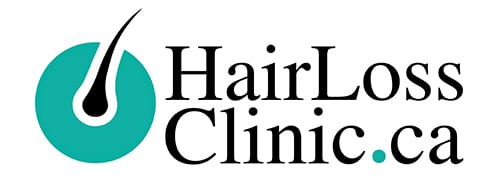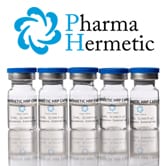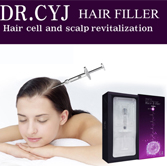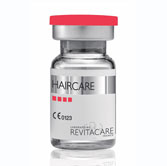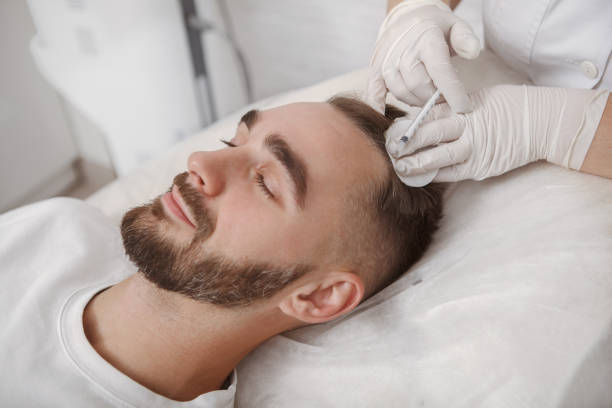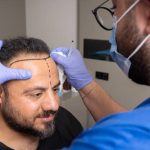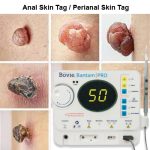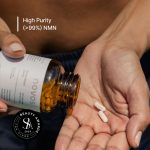November 5, 2023 By simonw Comments are Off
Table of Contents
Introduction to Platelet Rich Plasma (PRP)
Definition and Overview
Platelet Rich Plasma (PRP) consists of a high concentration of platelets within a limited plasma volume, obtained by centrifuging whole blood. Platelets, a type of blood cell, are critical for blood clotting and play an important role in the healing process of injuries. PRP harnesses this property by delivering a higher concentration of platelets directly to the affected area, potentially accelerating the body’s natural healing mechanisms.
The Importance of Platelet rich plasma in Medicine
In recent years, Platelet Rich Plasma has garnered attention in the medical community for its use in various conditions, from orthopedic injuries like Achilles tendinitis and knee osteoarthritis to cosmetic procedures aimed at hair growth for conditions like Alopecia areata and Androgenetic alopecia. The American Academy of Orthopaedic Surgeons and the American College of Rheumatology have taken note of the burgeoning curiosity in PRP, initiating numerous research efforts to scrutinize its effectiveness.
History and Development of platelet rich plasma Therapy
Early Developments and Uses
The journey of Platelet Rich Plasma from a theoretical concept to a clinical application spans several decades. Initially, its use was confined to the hospital setting, aiding in the healing of chronic injuries and post-surgical recovery. Famous athletes began to use PRP for ligament injuries, like anterior cruciate ligament (ACL) tears, bringing the therapy into the spotlight.
Modern Advances in PRP Therapy
Advances in equipment and techniques have made PRP therapy more accessible. Physicians now use ultrasound guidance to deliver PRP injections to the precise location, enhancing the treatment’s efficacy. These improvements, along with a better understanding of cell growth and tissue repair, have expanded PRP’s applications.
The Science Behind PRP
Platelets and Their Functions
Platelets are rich in growth factors that can promote cellular proliferation, tissue restoration, and regenerative processes. When concentrated through the preparation of PRP, these growth factors can be several times higher than in normal blood plasma, potentially providing a therapeutic benefit to the injured area.
The Role of Plasma in platelet rich plasma
Plasma, the liquid component of blood, acts as a vehicle for platelets during the PRP procedure. It supports cell proliferation and carries proteins, cytokines, and other substances critical to the healing process.
How PRP is Produced
The creation of Platelet Rich Plasma starts by taking a sample of the patient’s blood from the arm and then centrifuging it. This initial spin divides the red and white blood cells from the plasma and platelets. A second spin further concentrates the platelets. The resulting Platelet-rich plasma can then be inserted into the injured area, often with the addition of a local anesthetic to minimize pain.
The PRP Treatment Process
Preparing for PRP Therapy
In preparing for Platelet Rich Plasma (PRP) therapy, a patient might be advised by their doctor to avoid certain medications or adhere to specific dietary restrictions. On the procedure date, the patient should be well-hydrated and have arranged for transportation, as some may experience light-headedness following the session.
PRP Process: From Blood Draw to Injection
The entire procedure of PRP therapy starts with drawing a sample of the patient’s blood. This sample is then placed in a centrifuge, which spins at high speeds to separate the blood cells according to their densities. The result is a layering of red blood cells, white blood cells, platelet-poor plasma, and platelet-rich plasma. For the treatment, a high concentration of platelets is required, which is achieved by e-tracting the PRP layer.
This PRP, now a concentrated source of growth factors, is then prepared for reinjection. Some conditions might benefit from leukocyte-rich PRP, while others might see better results from leukocyte-poor PRP. This PRP preparation is a careful process managed by trained practitioners to ensure the increased concentration of growth factors is optimal for the targeted therapy.
Using ultrasound guidance to enhance precision, the doctor injects the PRP into the affected soft tissue or joint. The high concentration of platelets delivers a robust supply of growth factors to the area, promoting the body’s natural healing process.
What to Expect Post-Treatment
Post-treatment expectations can vary depending on the patient’s condition and the area treated. Some common responses include swelling and discomfort at the injection site, which generally subsides within a week. While patients are typically recommended to refrain from intense activities for a period, they are generally urged to participate in physical therapy to aid recovery.
Applications of Platelet Rich Plasma
PRP in Sports Medicine
In sports medicine, PRP injections are often utilized to treat acute sports injuries like ligament tears, muscle strains, and chronic conditions such as tendonitis. Professional athletes have frequently reported quickened recovery times and reduced pain following PRP treatment, making it a good option for those looking to return to their sport. For example, a torn tendon or soft tissue damage might be a target for PRP therapy, with the intent of repairing the tissue at an accelerated rate.
PRP in Orthopedics
Orthopedic conditions, including chronic injuries like knee osteoarthritis and other joint issues, have been treated with Platelet Rich Plasma. The American Academy of Orthopedic Surgeons and the American College of Rheumatology have recognized the employment of PRP in these instances. Patients suffering from joint damage may experience reduced pain and improved function post PRP therapy, though the long-term benefits are still under study by the medical community.
PRP in Aesthetic Medicine
In aesthetic medicine, Platelet Rich Plasma has found its place as a cosmetic procedure to promote skin rejuvenation and hair growth. For persons dealing with hair loss conditions such as androgenetic alopecia or androgenic alopecia, PRP hair treatment is considered a potentially effective. By injecting PRP into the scalp, the increased concentration of growth factors can stimulate dormant hair follicles, potentially leading to hair regrowth.
PRP in Wound Healing
Wound healing is an intricate process that can be supported by PRP therapy, especially in cases where underlying conditions impair healing. By utilizing PRP’s concentration of growth factors, doctors aim to accelerate the repair of tissue damage. Health Canada and the U.S. Food and Drug Administration (FDA) have taken an interest in PRP’s potential, leading to various clinical trials investigating its efficacy in wound care.
Clinical Research and Studies on Platelet rich plasma Effectiveness
PRP in Arthritis Treatment Studies
Arthritis, a condition that affects muscles and joints, causing pain and disability, has been a key focus for PRP studies. Clinical research shows that PRP injections, which have a high concentration of platelets and an increased concentration of growth factors, can help repair damaged joints and soft tissues. Studies report improvements in pain and function that may last a long time, although more standardized research is needed to establish its efficacy fully.
PRP and Hair Loss Treatment Studies
For individuals battling androgenic alopecia, PRP therapy has emerged as a good option. By injecting the scalp with Platelet-rich plasma injections, an enriched environment is created to promote hair follicle health. Reports indicate that PRP may help in strengthening hair follicles and promoting new growth, with some studies noting a decrease in hair loss.
PRP in Wound Healing Studies
The use of Platelet Rich Plasma in wound healing is supported by its biological premise. PRP, when applied to a wound, releases growth factors that can aid the natural healing process. This has led to several reports of successful healing of chronic wounds where traditional treatments have failed.
Criticisms and Controversies of PRP Therapy Research
Despite promising results, PRP therapy has faced criticisms, mainly due to inconsistent study designs, varying PRP preparation methods, and lack of standardization. There is a risk of b as in smaller studies and those without control groups, leading to questions about the true efficacy of PRP therapy.
Risks and Side Effects of PRP Therapy
Common Side Effects
PRP therapy uses the patient’s blood, greatly reducing the risk of allergic reactions or disease transmission. However, common side effects may include pain at the injection site, swelling, bruising, and bleeding. Most of these side effects are transient and resolve without intervention.
Potential Complications and Risks
Although the safety profile of PRP is generally favourable, risks, though minimal, do exist. These include infection, tissue damage, and ner e injuries. There is also a theoretical risk of cancer if growth factors stimulate the growth of pre-malignant cells, though this has not been substantiated in reports.
Understanding the Limitations of PRP Therapy
PRP is not a panacea; it may only be suitable for some patients or some conditions. The underlying condition of the patient can influence its effectiveness, the area being treated, and the overall health of the individual. Furthermore, the varying concentrations of platelets in PRP preparations can affect outcomes, as can the difference between leukocyte-rich and leukocyte-poor PRP.
The Future of Platelet Rich Plasma Therapy
Advance in platelet rich plasma Research
Ongoing research aims to refine PRP preparations and application methods to maximize efficacy. Advances include the development of more standardized PRP preparation protocols and exploring the mechanisms behind PRP’s effects on tissues at the cellular level.
Potential New Uses of PRP
The therapeutic applications of PRP continue to expand. Beyond the realms of orthopedics, sports medicine, and aesthetics, researchers are exploring PR use in various other domains. These explorations land PRP in neurosurgery, cardiac surgery, and ophthalmology, where its regenerative potential is beginning to be tapped.
Conclusion
Platelet-rich plasma (PRP) therapy harnesses the body’s healing processes, offering a promising treatment for various conditions with minimal side effects. Notable for its success in treating chronic tendon injuries and certain types of hair loss, PRP also shows potential benefits for knee osteoarthritis and muscle injuries by promoting quicker recovery.
Despite these benefits, there is still a call for more robust evidence and standardized protocols. The medical community’s response is mixed, with some skepticism due to a lack of extensive research and insurance companies do need to cover the cost of treatment consistently.
As research continues, PRP therapy remains at the forefront of regenerative medicine. It’s an evolving treatment reflecting modern medicine’s trend toward using the body’s cells for healing. The promise of PRP lies in its potential to revolutionize tissue regeneration, with ongoing studies poised to unlock new therapeutic possibilities.
Book Your Free Consultation Today Or Call (647) 492-9093
Q&A
What distinguishes PRP therapy from other cell therapies?
PRP therapy is a specific cell therapy that harnesses the regenerative abilities inherent in a patient’s blood by concentrating platelets to enhance tissue healing. This contrasts with other cell therapies that may use various cell types, such as stem cells, for repair and regeneration.
How does the entire process of PRP therapy work?
The entire process involves drawing the patient’s blood, concentrating the platelets through centrifugation, and injecting the PRP back into the affected area to enhance healing.
For which conditions has PRP therapy shown effectiveness according to scientific evidence?
Scientific evidence supports the effectiveness of PRP therapy, particularly in conditions like lateral epicondylitis, also known as tennis elbow, where it aids in tissue repair and pain relief.
What is the theory behind using Platelet Rich Plasma for medical treatments?
The theory behind Platelet Rich Plasma is that the high concentration of growth factors found in the patient’s platelets can accelerate the body’s natural healing processes when injected into injured areas.
Is there a significant amount of scientific evidence to support the use of PRP in medical treatments?
There is promising scientific evidence for the use of PRP in certain medical treatments, though for many applications, there is still little evidence and more research is needed to determine the full effectiveness of PRP.
How do insurance plans typically handle PRP therapy?
Insurance plans’ coverage of PRP therapy varies widely; while some plans have started to cover it, others still consider it experimental and exclude it from coverage.
Can PRP be effective in treating conditions that involve cartilage, like hyaluronic acid injections are?
PRP has shown promise in treating conditions that affect cartilage, such as osteoarthritis, and may be an alternative to hyaluronic acid injections, offering pain relief and improved joint function.
How does the effectiveness of PRP compare to traditional treatments for conditions like lateral epicondylitis?
For conditions such as lateral epicondylitis, PRP therapy has been reported to be effective, potentially offering better outcomes than traditional treatments like corticosteroid injections or physical therapy.
Does the body react differently to PRP than to other cell therapies?
The body may have a favourable reaction to PRP since it’s derived from the patient’s own blood, reducing the risk of immune rejection, which can sometimes occur with other cell therapies.
Are there any conditions where PRP is considered the standard of care due to its effectiveness?
PRP still needs to be considered the standard of care for most conditions, as more comprehensive studies are required to establish its effectiveness across various medical fields.
Comments are closed.
